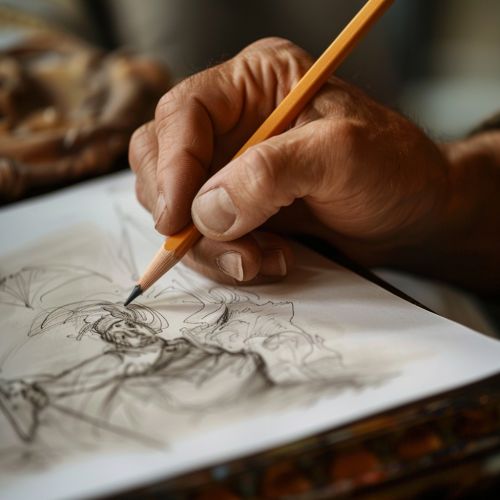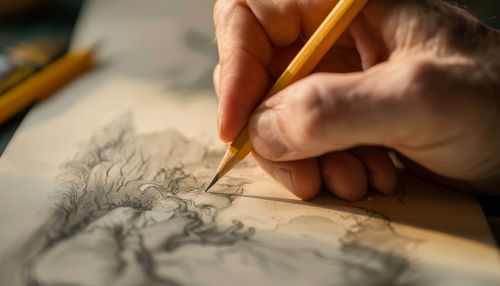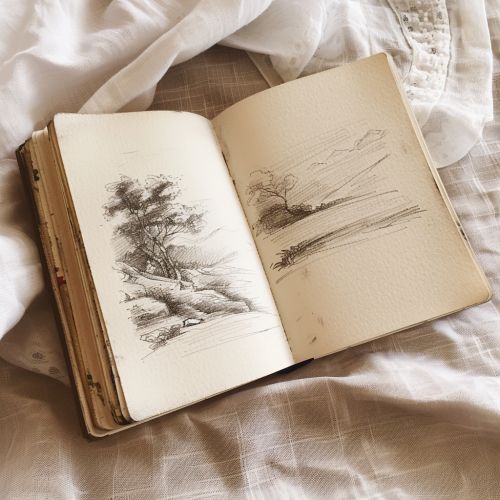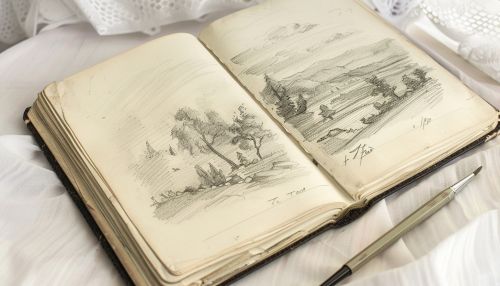Sketch
Introduction
A sketch is a rapidly executed freehand drawing that is not usually intended as a finished work. Sketches can be made in any drawing medium, although the term is most often associated with pencil drawings. They can be a way of recording or working out ideas. The process of sketching involves creating a quick and loose rendering of a subject or scene. Unlike many forms of art, it does not require a high level of detail or a clear outline. Instead, sketches often capture the basic essence or shape of the subject.


History
The act of sketching dates back to prehistoric times. Early humans used sketches as a form of communication and storytelling, often drawing on cave walls or other surfaces. These early sketches were simple and often depicted animals, hunting scenes, or other aspects of daily life.
As civilizations developed, so did the art of sketching. In ancient Egypt, for example, sketches were used in the planning and construction of monuments and buildings. Similarly, in ancient Greece and Rome, sketches played a vital role in the creation of intricate architectural designs and sculptures.
During the Renaissance, sketching became an essential part of the artistic process. Artists like Leonardo da Vinci and Michelangelo were known for their detailed sketches, which they used as a preliminary stage for their paintings and sculptures.
Materials and Techniques
Sketching can be done with a wide variety of materials, including pencils, charcoal, pastels, pen and ink, and more. The choice of material can greatly affect the appearance of the sketch. For example, pencil sketches often have a soft and delicate quality, while charcoal sketches are typically darker and more dramatic.
The technique used in sketching can also vary widely. Some artists prefer a more detailed approach, carefully rendering each element of the scene or subject. Others prefer a looser, more expressive style, focusing on capturing the overall mood or atmosphere.
One common technique in sketching is the use of hatching and cross-hatching. Hatching involves drawing closely spaced parallel lines to create a sense of texture and shading. Cross-hatching, on the other hand, involves drawing intersecting sets of parallel lines, creating a denser, more intricate pattern of shading.
Uses of Sketches
Sketches are used for a variety of purposes in many different fields. In art, they are often used as a preliminary drawing or study for a more detailed, finished work. Artists may use sketches to work out ideas, experiment with different compositions, or practice drawing skills.
In design and architecture, sketches are often used in the early stages of a project to explore ideas and concepts. They can help designers visualize their ideas and communicate them to others. In this context, sketches are often referred to as "concept sketches" or "thumbnail sketches."
In the field of science, sketches can be used to record observations, illustrate theories, or visualize data. For example, biologists may sketch specimens to record their physical characteristics, while geologists may sketch landscapes to illustrate geological features.


Digital Sketching
With the advent of technology, sketching has also evolved into a digital form. Digital sketching, or digital drawing, is a process where an artist uses a computer and drawing software to create sketches. This can be done using a mouse or a stylus on a digital tablet.
Digital sketching offers a number of advantages over traditional sketching. For one, it allows for easy editing and manipulation of the sketch. Artists can easily erase, resize, and move elements of the sketch without having to start over. Additionally, digital sketching software often includes a variety of tools and features that can enhance the sketching process, such as layers, brushes, and color palettes.
Despite these advantages, many artists still prefer traditional sketching for its tactile nature and the unique qualities of hand-drawn lines.
Conclusion
Whether done traditionally or digitally, sketching remains a vital tool for artists, designers, architects, and scientists. It allows for the quick capture of ideas, the exploration of concepts, and the development of skills. While it may not always result in a finished work, the process of sketching is often as important as the end product.
